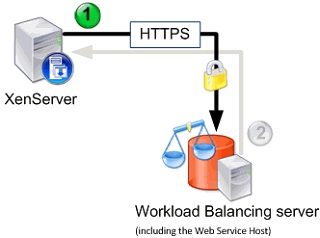The first layer collects and archives the metrics of XenServer with great precision. Its alerts system is based on the parameters collected. XenCenter monitoring system uses RRDs, which decreases in accuracy over time, but load balancing technology allows to keep the metrics controlled with great precision. It is emerging as a free alternative to third-party supervision services for users with a license, since an administrator can, for example, consult on Monday morning all data related to an issue that took place on Friday.
The second layer is responsible for analyzing historical metric trends, generate reports and chargeback. It allows administrators to set alerts and the reports provides better planning capabilities.
The third layer creates alerts and suggests the positioning of virtual machines. It analyzes thresholds and historical trend data record to alert users about potential issues and, in addition, it recommends administrators the possible migration of virtual machines.
The fourth layer automates workload balancing based on the recommendations made by the third layer. Administrators can configure a deployment to respond automatically to that suggestions to take the appropriate steps to improve the performance on a deployment.








0 Comments